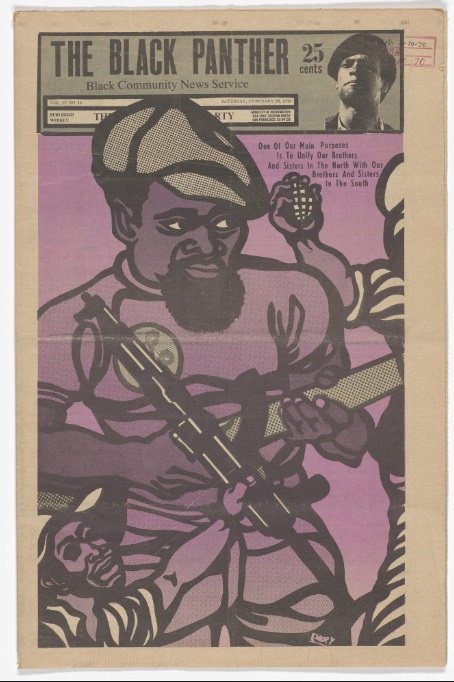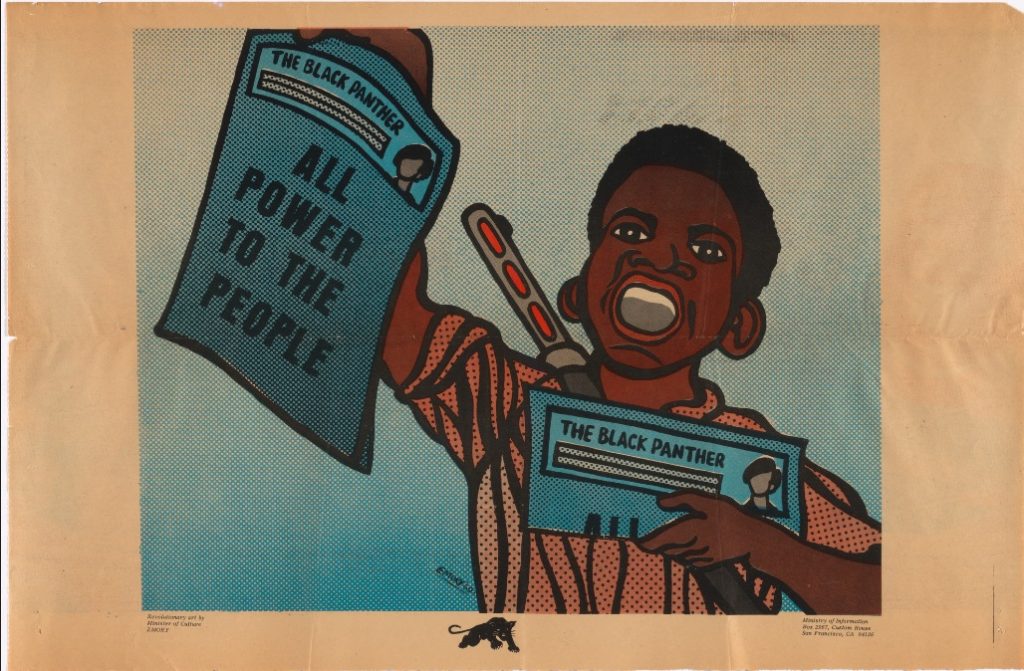American graphic designer and artist Emory Douglas is most renowned for his work as the Black Panther Party’s Minister of Culture in the 1960s and 1970s. Douglas, born on May 24, 1943, in Grand Rapids, Michigan, significantly impacted the style of the Black Panther Party. This socialist and revolutionary organization fought for the rights of African Americans.
Douglas created the iconic pictures associated with the Black Panther Party while serving as Minister of Culture. He produced powerful and thought-provoking images with bold colours and slogans against inequality, racial injustice, and police brutality for the party’s newspaper, “The Black Panther.” His efforts were crucial in disseminating the party’s proclamations and ideas.
Emory Douglas typically depicted scenes of resistance, solidarity, and empowerment in his artwork. Powerful pictures, rich colours, and forceful lines characterised his style. Even now, his contributions to visual culture, activism, and graphic design are recognised. Even though the Black Panther Party was dissolved in the late 1970s, Emory Douglas is still remembered as a pivotal player in political and revolutionary art history. His contributions to the visual language of activism have long-lasting influenced social and cultural movements.
Emory Douglas and Art
Emory Douglas is a very influential figure in art, especially for his contributions to political and revolutionary art and for serving as the Black Panther Party’s Minister of Culture. Emory Douglas was instrumental in creating the Black Panther Party’s graphic brand. His significant and enduring artwork helped to define the party’s identity and spread its themes of social justice, empowerment, and resistance. Douglas’s artwork represented the Black Panther movement and played a significant role in its enduring influence on American history.
Douglas became an activist through his artistic endeavours. He tackled important topics like racial injustice, police brutality, and systematic injustice through his paintings. His work inspired action and raised awareness while fostering a sense of togetherness among sympathisers and members of the Black Panther Party.

The accessibility of Douglas’s work was one of its most notable features. For the Black Panther publication, he produced visually arresting and provocative illustrations that helped make political themes digestible for a wide readership. His work spread the party’s ideas to individuals in the community and on the streets by serving as a medium of mass communication.
The graphic design industry has been impacted significantly by Emory Douglas’s work. His vivid colours, forceful lines, and powerful imagery established a benchmark for protest and political art. His style inspires many modern graphic designers and artists, who recognise its power in delivering political ideas. Douglas’s artwork visually documents the social and political milieu of the 1960s and 1970s. The heart of the Black Panther Party’s fight for civil rights and against systematic injustice is encapsulated in his paintings. His works serve as historical artefacts that deepen our comprehension of that period.
Art of Emory Douglas
Emory Douglas’s role as the Black Panther Party’s Minister of Culture throughout the 1960s and 1970s is his most well-known contribution to the organisation. His creation of essential and enduring visuals for “The Black Panther,” the official publication of the Black Panther Party, is his most noteworthy accomplishment.
Douglas produced several graphics for “The Black Panther,” the Black Panther Party’s official newspaper. His artwork, which addressed various social and political concerns, was prominently featured on the covers and throughout the journal. Vibrant colours, essential design components, and powerful statements marked the illustrations. Douglas’s artwork was used on various party manifestos, posters, propaganda items, and newspapers. His drawings played a crucial role in the Black Panther Party’s visual communication strategy, reaching a broad audience with revolutionary ideas and messages.
Douglas produced booklets and banners to encourage and include local communities. These resources’ powerful imagery and themes frequently centred on racial equality, self-defence, and community empowerment. Emory Douglas contributed to the graphic design of the Black Panther Party’s events. This involved making banners, placards, and other decorations that enhanced the overall appeal of party events and activities.
Beyond the specific pieces he created for the Black Panther Party, Douglas’s influence on the political and activist art genre defines his legacy. His graphic design aesthetic and methodology have had a lasting impact on the industry, inspiring a new wave of artists and campaigners.
Black Power and Emory Douglas
In the 1960s and 1970s, Emory Douglas and Black Power were closely associated, especially with the Black Panther Party (BPP).
His graphic design and artistic endeavours were crucial in promoting the Black Power ideals of empowerment, self-determination, and resistance. Douglas gave the idea of Black Power a visual expression through his drawings and graphic design. Strong, bold, and defiant portraits of African Americans were frequently portrayed in his paintings, fighting prejudices and promoting a sense of empowerment and self-worth.
Douglas created revolutionary images for the Black Panther Party’s posters, newspapers, and other publications. The Black Panther Party and Black Power, in general, came to be associated with the famous image of the panther, a symbol of strength and resistance. Under the direction of individuals like Emory Douglas the Black Panther Party, I worked to address structural injustice, precisely problems like racial inequity and police brutality. Douglas frequently portrayed situations of activism, neighbourhood organising, and opposition to repressive powers in his paintings.
Emory Douglas’s artwork aided in the popularisation of Black identity and consciousness. He promoted a sense of pride and solidarity among African Americans by showcasing strong and good images of Black people.






